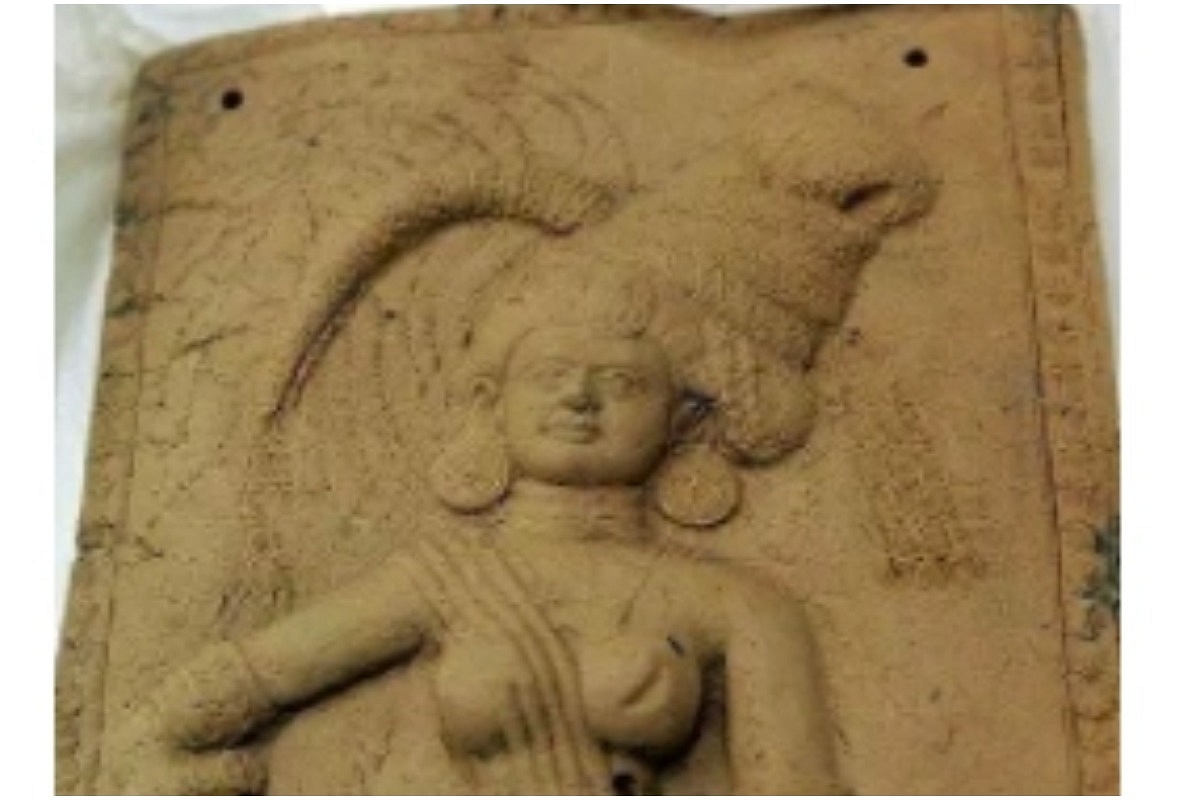Culture
The Great Loot Of Chandraketugarh Artefacts
- The true extent of the plunder of Chandraketugarh artefacts was revealed by Operation Hidden Idol by US Homeland security, which resulted in the seizure of 126 major artefacts directly looted and smuggled from Chandraketugarh.
- As per filings in the NYC District Attorney’s office, artefacts worth over 2.5 million dollars were illicitly exported from India and smuggled into the US, on or after 1995.

A Chandraketugarh artefact
‘Gifts’ and acquisitions from the now-jailed and infamous smuggler Subash Kapoor inhabit not just the galleries and museums of Yale and Harvard but also the likes of the Toledo Museum of Art, the Honolulu Academy, the Asian Civilisations Museum in Singapore, and even the Metropolitan Museum of Art (MET).
This is particularly the case when it comes to the stolen artefacts of the Chandraketugarh civilisation.
These three artefacts — all sold by Subash Kapoor’s Arts of the Past dealership to the Yale University Art Gallery — have one important identifier tag left out.
While the art market knows and markets them as Chandraketugarh artefacts, the mention of the same is missing as well as a mention of the state of origin i.e. West Bengal.
Now the question arises as to why such an important aspect was left out from a museum's direct acquisition.
Therein lies the key to how the art world operates. The true extent of the plunder of Chandraketugarh artefacts was revealed by Operation Hidden Idol by US Homeland security, which resulted in the seizure of 126 major artefacts directly looted and smuggled from Chandraketugarh.
As per filings in the NYC District Attorney’s office, artefacts worth over 2.5 million dollars were illicitly exported from India and smuggled into the US, on or after 1995.
Apart from the above, another 42 fragments and objects, though not specifically mentioned as of Chandraketugarh, are also part of the seizure — the combined valuation with the above exceeding 2.5 million USD.
As per the Toledo Museum of Art's 2007 annual report alone, Subash Kapoor gifted hundreds of Chandraketugarh artefacts to the museum.
The museum has also recognised and thanked Kapoor for gifting art worth more than $100,000 and saluted him for his donations amounting to $499,999.
It is important to view the above gifts and donations in the light of the sale price of a Ganesha — an invoice shows the Toledo Museum purchased the Ganesha from Kapoor in May 2006 for only $245,000.
It defies logic as to why a dealer, who had just sold an artefact to the museum for $245,000, would give it donations and gifts valued at three times that price!
A painstaking data mining effort by us in conjunction with US law enforcement revealed the modus operandi of the smugglers.
The precious artefacts were smuggled out of India via post. Imagine the delicate terracottas being shipped in courier envelopes. Ninety-five per cent of them arrived in the US.
It is truly unfortunate that the Chandraketugarh site, one that should have been celebrated as the very pinnacle of early Indian Art, does not even have a decent excavation report or a proper study published by the Archaeological Survey of India.
It has been conveniently left to the dark side of the antiquities trade and has instead become a site of rampant pillage for brilliant stone and terracotta works from where they become prized possessions of many western museums and collectors.
Honolulu Museum
In 2015, the Honolulu Museum of Art handed over seven rare artefacts to the U.S. Immigration and Customs Enforcement after their dubious provenance association with Subash Kapoor was revealed.
This was the consequence of a visitor contacting the authorities after recognising Kapoor’s name in the New York gallery as the source of a 2,000-year-old terracotta rattle.
Presently, these artefacts await restitution to India. The museum was one of the first to publicly and easily cooperate with the earlier mentioned Operation Hidden Idol investigation.
The Asian Civilisations Museum, Singapore
Similarly, an Art of the Past invoice dated April 2002 shows that the Asian Civilisations Museum bought three ancient rattles from Kapoor for $10,000.
Currently, the provenance of these artefacts has not been revealed and India is yet to take action.
Metropolitan Museum of Art (MET)
Unfortunately, even the Metropolitan Museum of Art (MET) houses ill-gotten ancient pots and rattles. Provenance information about these objects has not been revealed by the MET as well.
It is time museums and collectors realise that their “innocent” purchases are driving an illicit market.
So rampant is the lure of this dollar-driven greed, that much of our ancient and undiscovered past is lost under glass panes in museums and galleries across the world.
We at the India Art Foundation will to continue to work towards the restitution of our invaluable heritage and work to expose museums that house artefacts smuggled out of India.
Introducing ElectionsHQ + 50 Ground Reports Project
The 2024 elections might seem easy to guess, but there are some important questions that shouldn't be missed.
Do freebies still sway voters? Do people prioritise infrastructure when voting? How will Punjab vote?
The answers to these questions provide great insights into where we, as a country, are headed in the years to come.
Swarajya is starting a project with an aim to do 50 solid ground stories and a smart commentary service on WhatsApp, a one-of-a-kind. We'd love your support during this election season.
Click below to contribute.
Latest